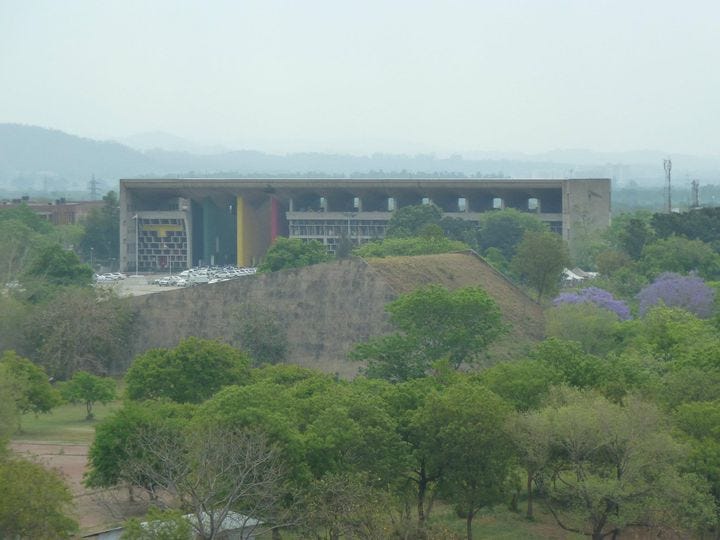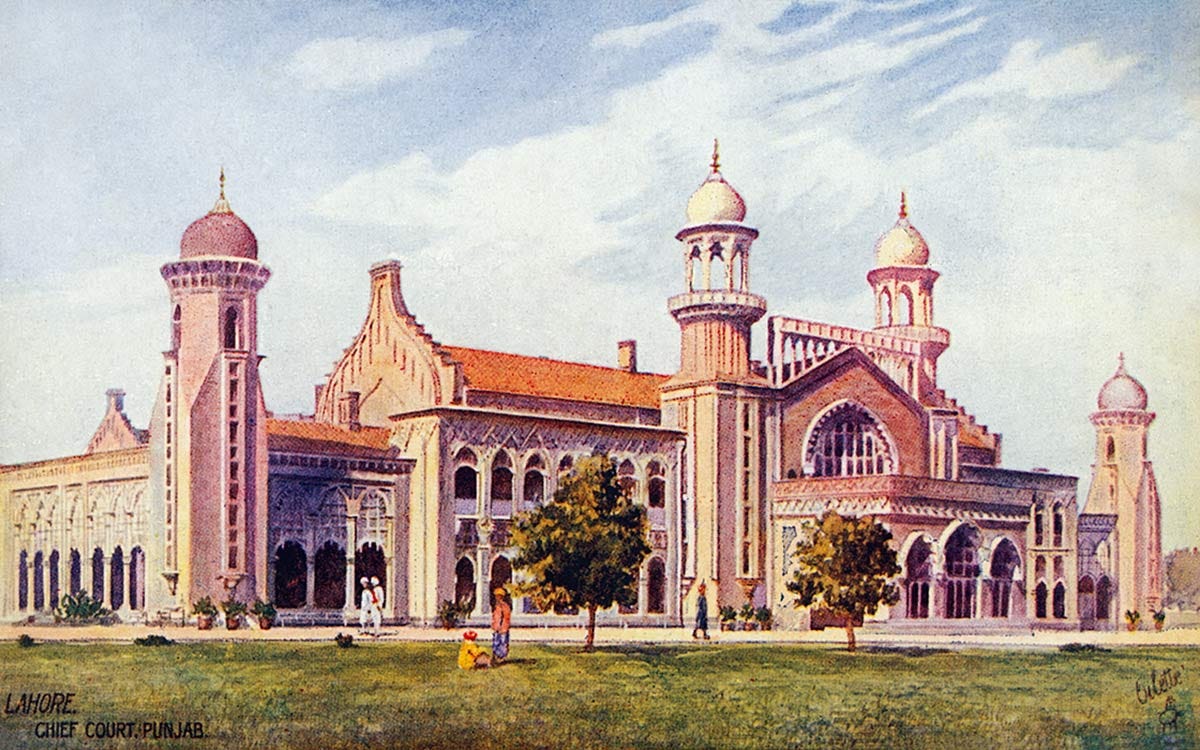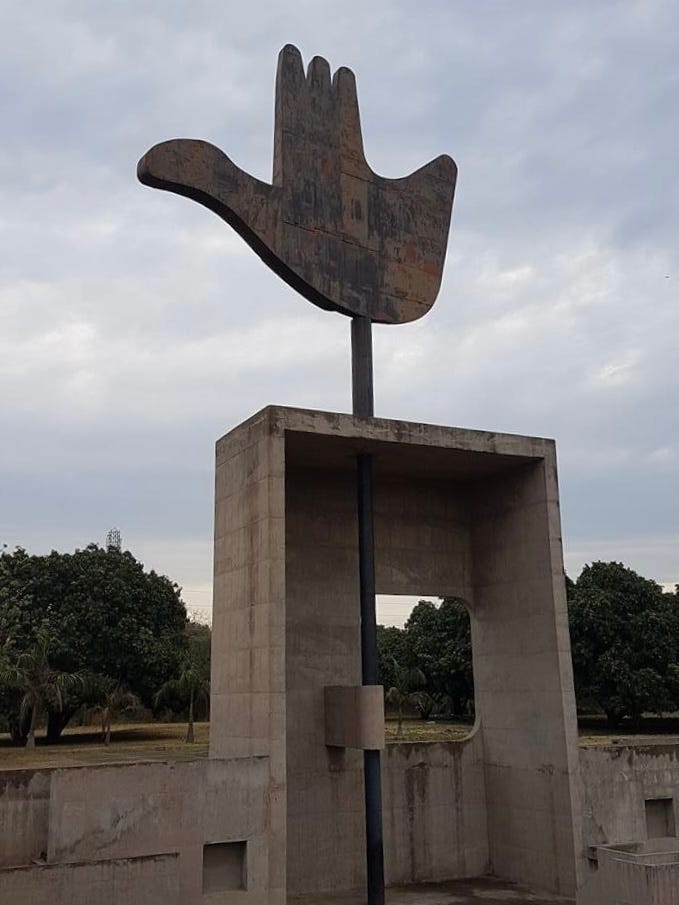Punjab and Haryana High Court: From Lahore to Chandigarh, via Simla
Evolution and Legacy of the Punjab High Court: From Lahore to Chandigarh, via Simla
Rich Legacy of Punjab High Court
The Punjab and Haryana High Court, Chandigarh with its storied past and prestigious lineage, stands as a testament to the rich judicial history of India. Tracing its origins from pre-partition days in Lahore to its present prominence in Chandigarh, the Court has seen numerous transformations and has played a a very significant role in the judicial landscape of India1.
Pre-Partition History
Establishment of the Lahore High Court
Founded on March 21, 1919, the Lahore High Court originated from the Chief Court2 of Punjab, which was dissolved upon the new High Court's establishment. It then had jurisdiction over undivided Punjab and Delhi, with comprehensive appellate, superintending powers, and original jurisdiction in specific cases, as defined by the Government of India Act, 1915 and Letters Patent.
Functioning and Powers
Before the Partition of India in 1947, the Lahore High Court was recognized as a court of record, equipped with extensive powers and jurisdictions. This period was marked by significant legal pronouncements and developments that shaped the region's legal framework.
Post-Partition Transformations
Birth of the East Punjab High Court
Following the partition in 1947, the necessity for a separate legal entity led to the establishment of the East Punjab High Court in Shimla under the Governor General’s High Courts (Punjab) Order, 1947.
Transition to Punjab High Court
With the introduction of the Constitution of India in 1950, the State of East Punjab was renamed Punjab, leading to the renaming of the High Court as the High Court of Punjab.

High Court Building—a Modern Architectural Marvel
The present building of the High Court in Chandigarh, designed by Le Corbusier and part of the Capitol project, is a significant architectural masterpiece that reflects the principles of modernist architecture:
Design by Le Corbusier: sometimes referred to as the Palace of Justice, this building was crafted by the renowned French architect Le Corbusier, whose design philosophy emphasized functionality, geometric simplicity, and a synthesis of traditional and modern elements.
UNESCO World Heritage Site: Recognized for its architectural significance, the building was declared a UNESCO World Heritage Site in July 2016, celebrating its contribution to modern architecture.
Symbol of Freedom: Supported by India's first Prime Minister, Jawaharlal Nehru, the High Court building was envisioned as a symbol of India's freedom and aspirations, reflecting Nehru's vision for Chandigarh as a new town symbolic of independent India.
Innovative Design Elements: Featuring modernist elements such as deep overhangs, recesses, perforated screens, and verandahs, the building's facade presents a grid of slender columns and inverted curves, offering a visually dynamic aesthetic.
Spatial Composition: Characterized by its cavernous interior with a grid of columns rising to a darkened ceiling, the design incorporates open-sided spaces and porticos that allow natural light to permeate, enhancing the interplay of light and shadow.
Integration with Capitol Complex: As part of Chandigarh’s Capitol complex, alongside the Assembly and Secretariat, the design symbolizes the city's administrative and judicial functions in a cohesive architectural ensemble.
This architectural gem, by Le Corbusier, stands as a testament to innovative design and modernist principles, underscoring its enduring significance in the world of architecture.
Expansion and Relocation
The merger of Patiala and East Punjab States Union (PEPSU) into Punjab in 1956 expanded the number of Judges in the Punjab High Court. Due to challenging weather conditions in Shimla, the High Court was relocated to Chandigarh in 1955, where it operates from its present building.
Formation of Punjab and Haryana High Court
The reorganisation of Punjab in 1966, under the Punjab Reorganisation Act, led to the creation of Haryana and the Union Territory (UT) of Chandigarh. Consequently, the Punjab High Court was renamed as the Punjab and Haryana High Court, serving both states and the UT from its seat in Chandigarh.
Judges Who Rose to National Prominence
Several luminaries of the Punjab and Haryana High Court have been elevated to the highest judicial positions in India, showcasing the Court's role as a crucible of judicial talent. This list includes the rare example of Justice Kuldip Singh who was elevated directly from the High Court Bar as a Judge of the Supreme Court of India3.
Notable Chief Justices of India
Justice Madan Mohan Punchhi: His profound legal insights and contributions were recognized nationwide when he ascended to the position of Chief Justice of India.
Justice P. Sathasivam: Known for his judicious balance and legal acumen, he served as the Chief Justice of India, bringing honor to the court.
Justice Tirath Singh Thakur: His tenure as Chief Justice of India was marked by significant judicial reforms and decisions.
Justice Jagdish Singh Khehar: As Chief Justice of India, he was known for his incisive judgments and strong commitment to judicial integrity.
Justice Ranjan Gogoi: His leadership as Chief Justice was pivotal during challenging times for the judiciary, reinforcing the law's supremacy.
The Punjab and Haryana High Court's journey from the Lahore High Court to its current form encapsulates a significant spectrum of historical and judicial developments. Its evolution reflects not only the geopolitical changes of the region but also the enduring strength and adaptability of India's judicial system. The High Court continues to uphold the rule of law and administer justice, contributing profoundly to the legal and cultural tapestry of India.
Gratefully acknowledge the ideas of Harpreet Singh Multani, Advocate-cum-Member Bar Council, Punjab and Haryana High Court. He can be reached on multaniharpreet98@gmail.com .
The Lahore Chief Court, an architectural marvel captured beautifully in the historical postcard by Raphael Tuck & Sons, reflects the grandeur and rich history of Lahore. Constructed in the distinctive "late Pathan style" of the 14th century, this term denotes the architectural styles that flourished under the Pathan dynasties, characterized by intricate jali work, robust pillars, and pointed arches reminiscent of the Islamic influence of that era. Inaugurated in 1888, the building's majestic façade and stately demeanor not only served the judicial needs of the region but also mirrored the socio-political significance of Lahore during the British Raj.
Positioned strategically between the Chief Court and the Cathedral, the statue of Lord Lawrence, who served as the Chief Commissioner and Lieutenant Governor of the Punjab from 1853 to 1859, adds a layer of historical narrative, symbolizing the colonial administration's influence over the Punjab. The court's grand architecture also caught the eye of Hollywood, serving as a Maharajah’s palace in the 1956 film Bhowani Junction, directed by George Cukor and starring Ava Gardner. This building, therefore, stands not just as a testament to the legal heritage of pre-partition India but also as a beacon of cultural and cinematic history, bridging the past with the present through its enduring legacy and architectural splendor.
Thanks to the young and dedicated Vipul Joshi, Advocate, Punjab and Haryana High Court for the underlying research. He can be reached on vipuljoshi.adv@gmail.com .







ਦੁਨੀਆਂ ਦਾ ਹਰ ਮਨੁੱਖ, ਵਸਤੂ, ਧਾਤੂ, ਸੰਗਠਨ, ਧਰਤੀ, ਅਕਾਸ਼ ਅਤੇ ਹਰ ਦਿ੍ਸ਼ਟਮਾਨ ਵਰਤਾਰਾ ਚਲਾਏਮਾਨ ਵੀ ਹੈ ਅਤੇ ਨਾਸ਼ਵਾਨ ਵੀ। ਸਦਾ ਸਥਿਰ ਰਹਿਣ ਵਾਲਾ ਕੇਵਲ ਵਾਹਿਗੁਰੂ ਹੀ ਹੈ ਜੀ।
Thanks for giving detailed information about this prestigious Punjab and Haryana High Court from present to pre partition. The justice system to approach by general public is very expensive. Most of time, the Supreme Court and High Courts verdict are free and fair without inclination but sometime I feel politically motivated verdicts. But still We the people have faith in our judicial system. Jai Hind.